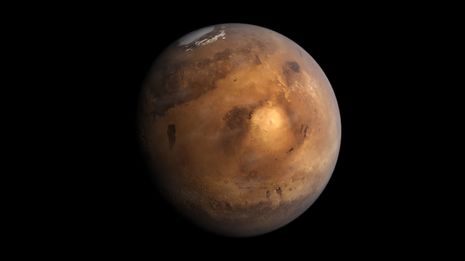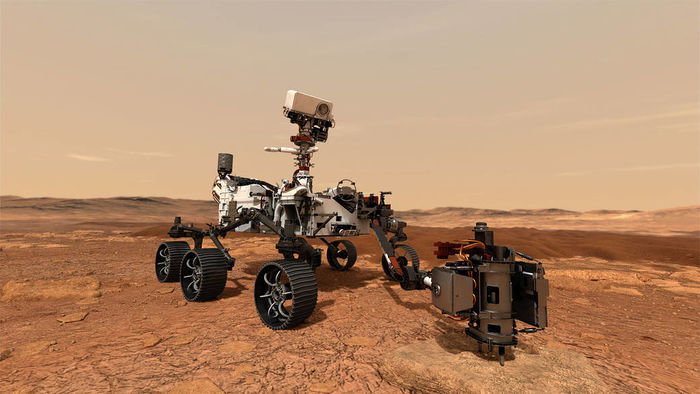Cambridge professor joins NASA mission in search of past life forms on Mars
The Professor of Mineralogy and Petrology is part of the Mars Perseverance mission to discover previous life signs on the planet

Professor Nicholas Tosca, from the Department of Earth Sciences at the University of Cambridge, is part of a team of scientists at the core of the Mars 2020 Perseverance mission and is the only scientist from the UK to be selected by NASA for a role.
Tosca’s role will involve analysing the rock samples that the Perseverance Rover collects from the Jezero Crater upon returning to earth. Using his expertise in mineralogy, he will be tasked with reconstructing the conditions under which early Martian life may have occurred.
NASA had chosen the landing space of the Jezero Crater due to its history as an ancient lake; it is believed to contain sedimentary rock of over 3.5 billion years old. Analysis of these rocks will contribute to the broader mission of determining the habitability of Mars by looking for biosignatures of past microbial life.
Rock samples from Jezero Crater will be extracted by the Rover, equipped with a drill to collect small samples, preserving them for collection by a future Mars mission in about ten years. When the rocks are returned from Mars, analysis by Professor Tosca and the Core Science team will mark the first time that humans can study Martian rocks in person.
On being chosen to be one of the first scientists to analyse Martian rock samples on Earth, Tosca said: “The fact that we may actually see these samples and study them, in my own lifetime, is just mind-blowing. When I told my son about it, I think we pretty much both had the same reaction. I kind of felt a five-year-old’s excitement in terms of what discoveries this mission might bring, and just that raw curiosity and interest in other worlds that most of us had when we were that age.”
He continues: “This mission is the first step towards sending samples back from Mars – we won’t fully know how those samples preserve biosignatures until they are back in the lab, but we will be able to use rover instrumentation to select samples we think offer the best chance of preserving evidence of ancient microbial life and the chemical signatures it may have left behind.”
Tosca emphasises the significance of such a groundbreaking mission, explaining: “What works so well is how this work dovetails with questions about the origins of life and the workings of climate systems, both on and beyond our home planet. We can ask big questions - but ones that are actually testable with future missions to Mars.”
The Perseverance rover landed on Mars on February 18th, after an 8-month long journey to the planet. It is set to spend at least one Mars year (approximately 687 Earth days) on the planet’s surface, constructing a complete image of the environmental conditions and assessing the suitability for future crewed missions to Mars through analysis of oxygen production.
NASA has released videos of the landing, showing the final stage of descent. It is hoped the footage from the rover's many cameras will provide feedback for engineers back on earth.
The videos show the release of the parachute, the jettisoning of the heat shield, and touchdown on the planet's surface.
Landing on the planet is notoriously difficult because the thin atmosphere makes it hard for a spacecraft to safely descend onto the surface. NASA is one of four space agencies that have put a craft into orbit around Mars.
The Rover also includes Ingenuity, the Mars Helicopter, which may see NASA achieve the first powered flight on the Red Planet. Following the successful landing on Thursday (18/02), the Rover sent its first transmissions to NASA headquarters, including the first image from the Jezero crater.
 News / Caius mourns its tree-mendous loss23 December 2025
News / Caius mourns its tree-mendous loss23 December 2025 Comment / Yes, I’m brown – but I have more important things to say22 December 2025
Comment / Yes, I’m brown – but I have more important things to say22 December 2025 News / Clare Hall spent over £500k opposing busway 24 December 2025
News / Clare Hall spent over £500k opposing busway 24 December 2025 Interviews / Politics, your own way: Tilly Middlehurst on speaking out21 December 2025
Interviews / Politics, your own way: Tilly Middlehurst on speaking out21 December 2025 News / King appoints Peterhouse chaplain to Westminster Abbey22 December 2025
News / King appoints Peterhouse chaplain to Westminster Abbey22 December 2025









